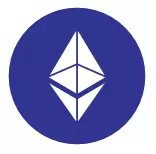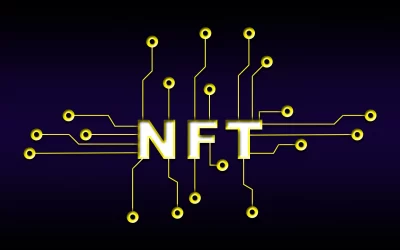Ethereum

Ethereum
Ethereum is an open source distributed software platform based on blockchain technology. It has its own native cryptocurrency called Ether and a programming language called Solidity.
Blockchain is a distributed ledger technology that records actions, such as transactions, in a permanent and tamper-proof manner. It is a platform that can be adopted by all those who wish to join the Network, and in this way they will have a solution that allows all participants to have an immutable and shared repository of all transactions implemented over time and at the same time is designed so that it cannot be stopped, blocked or censored. Ethereum is designed to be adaptable and flexible and to easily create new applications. That is, Ethereum is a Programmable Blockchain that not only provides predefined and standardized “operations” but also allows users to create their own “operations.” In fact, it is a Blockchain that allows for the creation of different types of decentralized applications not necessarily limited to cryptocurrencies alone.
Ethereum is Bitcoin’s main competitor.
Ethereum allows developers to create decentralized applications (dapps) that, unlike traditional apps, these do not need any mediator to function. Because they are still a relatively new concept, it is difficult to define them precisely. However, they are apps that instead of relying on centralized servers take advantage of blockchain platforms and their distributed network. The founder, Vitalik Buterin, first described Ethereum in a proposal in 2013 that suggested, to improve Bitcoin’s already existing infrastructure, the addition of a scripting language to program the entire blockchain. A scripting language is a programming language for a runtime system that automates, through “smart contracts,” the execution of tasks that would otherwise be performed individually by a human operator.
The project landed online on July 30, 2015, and was funded by an online crowdsale, or crowdfunding carried out through the issuance of tokens, i.e., cryptocurrency.
APPLICATION AND USE CASES
Ethereum 2.0 road-map.
Ethereum 2.0, also known as ETH 2.0, is a major upgrade of the Ethereum network that will take place in 2022. The goal is to increase transaction throughput for the network from 15 transactions per second to tens of thousands of transactions per second. It will do this by dividing workloads among many parallel blockchains that share a common consensus Proof-of-Stake(PoS) blockchain. Harmfully tampering with a single chain would require tampering with the common consensus, an action too costly to be worth it for any threat actor.
The transition to ETH 2.0 is underway. Its three phases are as follows:
Phase 0 — The “Beacon” chain. Launched on Dec. 1, 2020, it created the PoS blockchain that serves as the central hub of Ethereum 2.0.
Phase 1 — The union. This will merge the Beacon Chain with the original Ethereum network, marking the complete transition from PoW (Proof-Of-Work) to PoS(Proof Of Stake).
Phase 2 – Sharding or fragmentation. This will spread the network’s workload over 64 new networks
According to the Ethereum Foundation, Ethereum can be applied to encode, decentralize, protect and exchange almost anything.
Its uses include the following:
fundraising
financial exchanges
corporate governance
domain names
intellectual property
intelligent property with hardware integration
voting
contracts and agreements
Ethereum can be used for the following purposes:
buying and selling cryptocurrencies such as Ether as well as numerous tokens developed on the Ethereum blockchain
host smart contracts and decentralized apps (dApps);
conduct decentralized finance activities;
exchange non-fungible tokens (NFTs);
power Ethereum-based software;
play Ethereum-based video games, where users can earn real cryptocurrencies by playing.
Ethereum-based projects include the following two examples:
Microsoft and ConsenSys partnership: using the Etheruem blockchain as a “Service” on Microsoft Azure. Microsoft’s partnership with ConsenSys aims to provide enterprise customers and developers with a “blockchain cloud” development environment, then an online digital repository.
Advanced Micro Devices and ConsenSys joint venture: build a “data center” network using Ethereum infrastructure.
Ethereum vs. Bitcoin: key differences
Bitcoin is the most widely used cryptocurrency and Ethereum is second to Bitcoin. The word Bitcoin is used to refer to the blockchain network and the currency itself. Ethereum refers to the network and Ether refers to the corresponding cryptocurrency.
Abbreviation: BTC refers to the Bitcoin currency and ETH refers to Ether.
Bitcoin is the world’s first cryptocurrency, created in 2009. Ethereum came next in 2015. Ether was originally intended to complement Bitcoin, but the two coins ended up competing.
Transactions enabled: Bitcoin trades exclusively in cryptocurrency, while Ethereum offers several methods of exchange, including smart contracts.
Block generation: The average block generation time for confirming an Ether transaction is about 12 seconds compared to Bitcoin’s 10 minutes.
Consensus system: The Ethereum and Bitcoin networks both operated on Proof of Work (PoW) systems, used to validate transactions. In 2022, Ethereum will switch to a new system called Proof of Stake (PoS) as part of the Ethereum 2.0 upgrade.
Executability code: Ethereum transactions can be affixed with executable code, while Bitcoin network transactions cannot. This allows decentralized applications and conditional transactions, which are transactions that occur only when certain conditions are met.
Type of cryptography: The two blockchain networks run different cryptography Ethereum runs Ethash and Bitcoin runs Secure Hash Algorithm 256 (SHA-256) cryptography.
HOW DOES IT WORK
Ethereum participants operate on a peer-to-peer network; they develop and manage Ethereum smart contracts using the computational resources of the Network. The use of these resources is remunerated with a special “virtual currency” called Ether. Ether actually has a dual role: on the one hand, it is itself the processing power needed to produce the contracts, and on the other hand, it represents the cryptocurrency that makes it possible to “pay” for the realization of the contracts. Ether is basically and concretely a token that is traded by cryptocurrency exchanges with the ticker symbol of ETH.
Ethereum then relies on an Internal Transaction Pricing Mechanism called Gas that aims to optimize network resources, prevent spam, and allocate resources proportionately and correctly according to requests.
Ethereum smart contracts
Smart contracts are codes that can facilitate the exchange of money, shares, content, or anything else of value. They are created using the Ethereum Virtual Machine (EVM). Once a smart contract runs on the blockchain, it behaves like an automated computer program. It works as programmed, without censorship, inactivity or third-party influence.
Through the Ethereum blockchain, decisions made consensually in the network can be bound, rather than subordinated to a central entity that authorizes all activities, such as smart contracts. Although they are called contracts, they do not have to be compiled or filled. Smart contracts are used to execute portions of code that are affected by a transaction; smart contracts exercise direct control over one’s ether currency account and its value-the goal is to keep track of the variables involved, to ensure traceability and transparency.
When we talk about transactions we refer to a packet of data containing a message directed to an external account.
Within a transaction are:
The address of the recipient of the message;
The signature of the sender;
The amount of Ether that is the subject of the transaction;
A value representing the maximum number of resources that can be used in the transaction (Gas Limit); and
A value equal to the fee paid by the sender for the computational step (Gas Price).
So within the network it is necessary to pay, in Ether currency, the same network in order to take advantage of the computational power. Ether therefore is not only the blockchain but also the cryptocurrency needed to carry out transactions, that is, to send and receive payments and circulate smart contracts.
The contract, however, unlike a written agreement, involves variables; meaning it behaves autonomously because it reacts to inputs by responding with consequential outputs; hence the term smart contract. However, the smart contract, while it is true that it provides for variables, in any case respects and binds the contracting parties to shared rules that cannot be waived. In fact, the parties to the contract are bound without any possibility of modifying the contract; on the other hand, two contracting parties can sign the contract in derogation of the legislative powers of their respective countries: the most common example is online betting in the financial sector or loans.
Ethereum therefore is not just an alternative currency to the traditional one. Contracts within the Ethereum blockchain enable a whole range of important transactions, such as registering a domain, starting a crowdfunding.
What is the Ethereum Virtual Machine EVM
Ethereum’s engine is the Ethereum Virtual Machine (EVM), which is the de facto runtime environment for the development and management of smart contracts in Ethereum. EVM operates in a protected manner, meaning it is completely separate from the Network. The code managed by the Virtual Machine has no access to the Network, and the generated Smart contracts themselves are independent and separate from other Smart contracts. That is, Smart contracts are available on the Blockchain in EVM bytecode (an Ethereum-specific binary format), are written in Ethereum “high level language,” transformed into byte code with an EVM compiler, and uploaded to the Blockchain with an Ethereum client. Ethereum is a “Turing complete” system that allows developers to create applications that run on the EVM using programming languages that in turn reference traditional platforms such as JavaScript and Python.
Ethereum and Ether: what is the difference?
Ethereum is a blockchain-based network. It is a platform that developers can use to create applications and program the smart contracts on which the virtual currency is based.
Ether (ETH) is Ethereum’s native cryptocurrency. It is bought and sold using the Ethereum platform. It is one of many cryptocurrencies that can be traded using the Ethereum network. It is also used to reward miners when they add blocks to a blockchain.
Ether supports the Ethereum network; it is used to pay for computational services and applications built on the platform.
For example, an application running on Ethereum requires resources to run. Developers use Ether tokens to fund an application and support it on the network.
In summary, Ethereum itself is not a cryptocurrency; the term ethereum refers to the digital platform. The tokens (used for payments in the network) are called “ether.” In other words, ether is the “crypto-fuel” (or cryptocurrency) that makes the ethereum network work. When it comes to trading, the prices you will see refer to ether. Nevertheless, when we talk about ethereum, we usually refer to the cryptocurrency.
BULLS & BEARS
Advantages of Ethereum
Many advantages of blockchain technology apply to Ethereum, including the following:
Decentralization: Ethereum is decentralized, so there is no interference from third-party cloud service providers. It uses blockchain, which enables peer-to-peer transactions i.e., allows users to exchange value or store data without the need for an intermediary, unlike other software applications, which often require trust in a central authority.
Availability: Because Ethereum is decentralized, there is no downtime if a node goes down. Other processing models use centralized servers and can suffer performance problems if interrupted.
Privacy: When using the network for exchanges, users can remain anonymous. They do not need to enter their personal credentials to use an Ethereum application.
Security: Like any decentralized blockchain-based network, Ethereum is designed to be unhackable. Hackers would have to control most network nodes to exploit the network.
Authorization-free: Ethereum is an authorization-free blockchain, which means anyone can participate. This contrasts with authorized blockchains, which are limited to designated participants.
Less ambiguity: “Hardcoded” smart contracts that serve as the basis for trade and agreement on Ethereum guarantee stronger contracts. For example, a freelancer who obtains work through a dApp on Ethereum could enter into a smart contract with a hardcoded rule that states, “Compensation X will be released when work Y is completed.” This differs from normal contracts, which require interpretation and follow-through.
Disadvantages of Ethereum
Criticisms of the Ethereum platform:
Resource intensive : Ethereum’s current use of the PoW consensus protocol is an energy-intensive way to ensure that network nodes agree on the status of all information recorded on the blockchain. All smart contracts are stored on all nodes on the blockchain, and each node computes each smart contract simultaneously.
Security: The PoW protocol also raises a security issue. Vulnerabilities in smart contracts on the public blockchain are visible to all and may take longer to fix than to exploit.
These criticisms will be addressed when Ethereum moves from a PoW consensus algorithm to a PoS consensus mechanism in 2022. PoS is expected to improve Ethereum’s blockchain energy efficiency by providing more mining or block validation power to miners with more coins. The result is fewer nodes doing more work. It also requires no special equipment: only the amount of coins needed, staked, for mining and an Internet connection.
Proof of Stake (PoS) Features.
Anyone who holds coins can be a validator (Minimum 32 ETH)
Validations are fast, determined by the amount of time the person has held the coins.
Differences between Proof-of-work(PoS) and Proof-of-stake(PoS)
Proof of Work (PoW) and Proof of Stake (PoS) are algorithms used to reach consensus on blockchain; but their differences are:
PoW makes use of miners, while PoS uses validators.
In PoW, complex mathematical algorithms are used to validate a blockchain, whereas, in PoS, a validator is chosen deterministically.
In PoS, the validator receives transaction fees as a reward and everything is done by opening his wallet. In PoW, the miner works hard to get his reward.
Benefits of switching from PoW to PoS
The future switch from PoW to PoS brings the following advantages:
Better energy efficiency (no need to use a lot of energy to mine blocks).
No need for elite hardware to have the ability to create new blocks.
Improved immunity to centralization: proof of participation should lead to more nodes in the network.
Increased support for shard chains (key improvement for scaling the Ethereum network).












